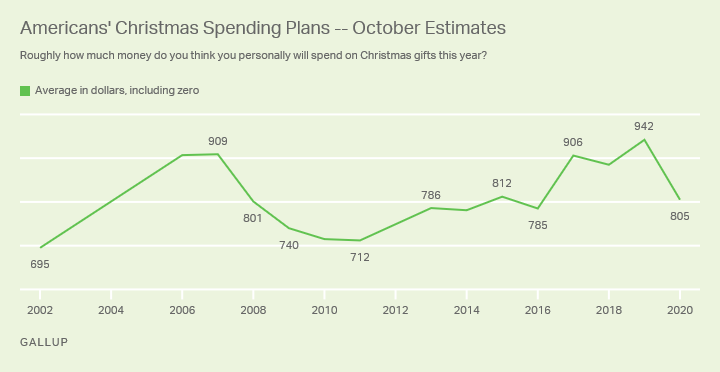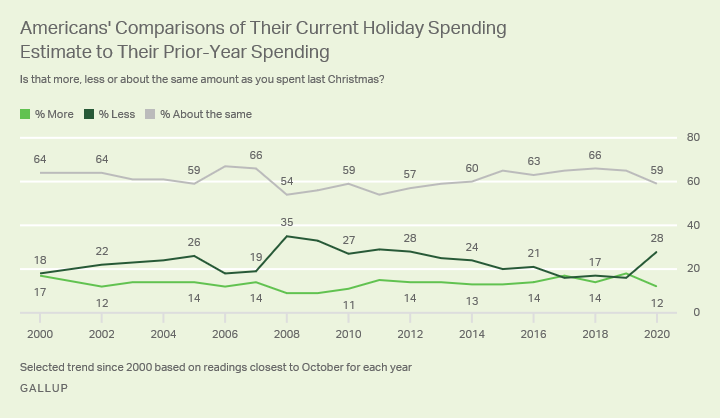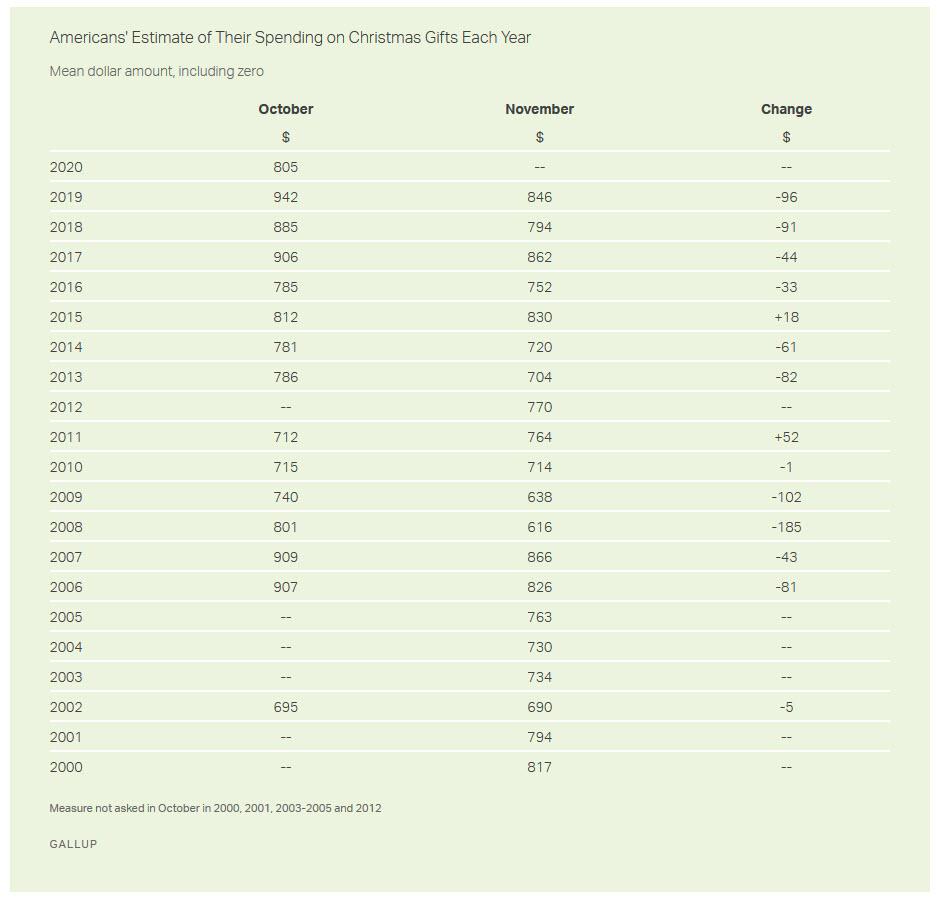Americans Plan To Significantly Scale Back Holiday Spending This Year
Tyler Durden
Wed, 10/28/2020 – 12:20
By Lydia Saad of Gallup
Americans predict they will spend an average $805 on Christmas gifts this year, significantly below their estimate a year ago ($942) and the lowest October holiday spending projection Gallup has measured since 2016.
The sharp decline in Americans’ spending intentions since 2019 points to weak holiday sales for retailers.
The Sept. 30-Oct. 15 poll also finds 28% of Americans saying they will be spending less on holiday gifts this year than in 2019, more than double the 12% who expect to spend more. While the majority say their spending will stay the same, the 28% planning to spend less is the highest October reading since 2012.
A strong tilt toward less spending, as is seen now, is typical of consumer intentions during recessions and slow economic times, but contrasts with the past three October polls, when Americans were about equally as likely to say they would spend more as spend less.
Implications
Gallup’s annual question asking Americans to predict what their holiday spending will be has been a reliable harbinger of annual retail sales in most years. This is particularly true for Gallup’s forthcoming November estimate, as that better captures consumers’ mindset during the height of the season.
Holiday sales typically increase year-over-year, rising 3.3% on average since 2000, with sales up more than 5% in strong years and around 2% in weak years, according to figures compiled by the National Retail Federation. Since 2000, holiday sales have been worse than that only twice: in 2008, during the global financial crisis and December 2007-June 2009 recession, and in 2009, when the economy was still recovering from these events.
Should Americans’ predictions for their holiday spending hold up over the next month, retailers may see gains of just over 2% in sales, on average, this year. However, as Gallup has noted in the past, consumers’ mindset is fragile and can change quickly in the event of economic or political shocks.
With the number of new COVID-19 cases rising, the fate of a second round of stimulus checks hanging in the balance in Congress, and the presidential election around the corner, the chances are high for a shift in consumers’ spending intentions on discretionary items like holiday gifts.
Gallup trends show Americans’ spending intentions have declined between October and November in 10 out of 13 years when the question was asked in both months. If that occurs this year, retailers should brace for even weaker sales. But it’s also possible that their spending estimate could increase significantly as occurred once, in 2011, thus portending a better situation for retailers. The best they might reasonably hope for is stability.
via ZeroHedge News https://ift.tt/327D4Gb Tyler Durden



